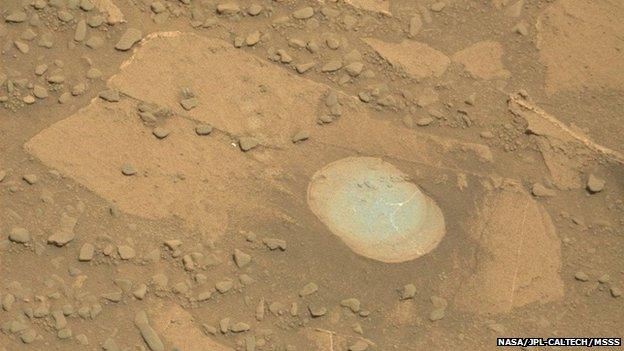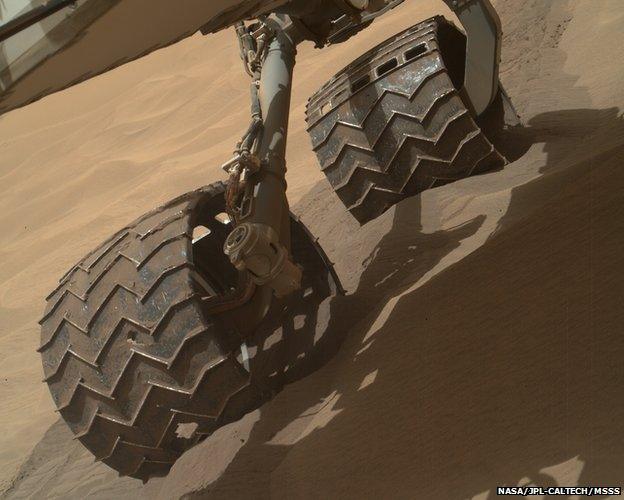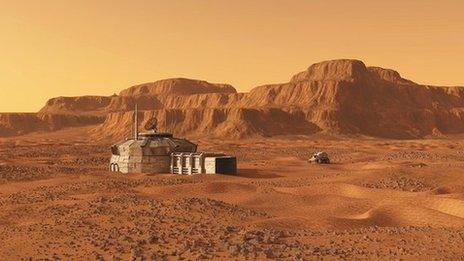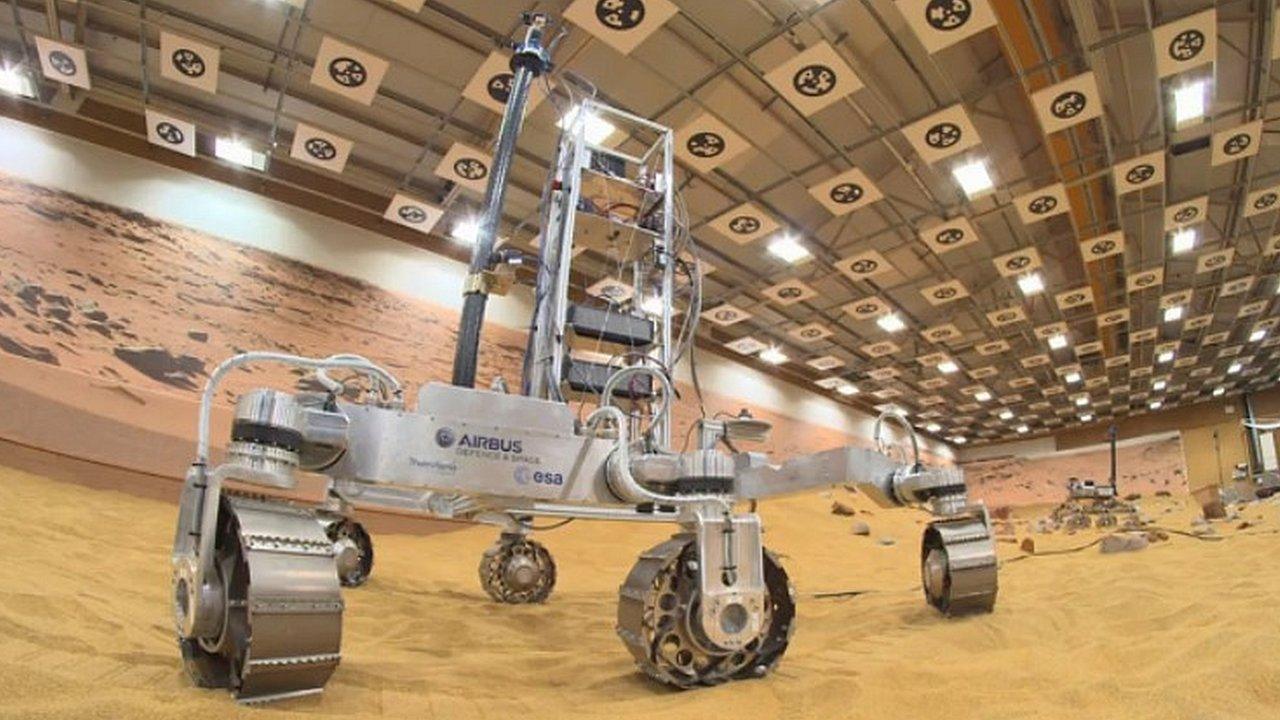Curiosity Mars rover's drill test cut short
- Published

Unexpected turn: The rover's robotic arm pushes the drill into Bonanza King for the mini test
Nasa's Curiosity rover on Mars has had its drill out again.
The robot turned the tool in a flat slab of rock dubbed "Bonanza King", but it looks as though the operation failed to complete as planned.
Engineers are now examining the possibility that Bonanza King moved as the drill pushed down.
They have commanded Curiosity to collect a large sequence of photographs and return them to Earth for an assessment.
Curiosity has previously drilled into three rocks to produce a powder for analysis in its sophisticated onboard laboratories.
The practice is always to do a shallow, mini-drill test first - to check for stability in the rock target and for the proper working of the tool itself.
If the outcomes are positive, Curiosity is then given the go-ahead to sink a full, 6cm-deep hole, which has the effect of pushing drill powder up into a sample-collection chamber.
This next step will now be delayed while the team investigates what happened with Bonanza King.
"The initial stages of mini-drilling seem to have worked, but the whole mini-drill activity did not complete successfully," explains deputy project scientist Dr Joy Crisp.
"From the limited data we currently have, we think that the rock might have moved during the activity," she told BBC News.
"Mars time and Earth time are not currently lined up favourably, so for each planned rover sol (day), we have to wait two days to get the data back from Mars.
"Yesterday, we sent commands to the rover to retract the drill and take a lot of imaging."

Bonanza King was brushed clean of dust before the drill test got under way
Bonanza King is interesting to scientists because it could provide a preview of the type of rocks Curiosity will encounter when it finally reaches its primary mission destination at the base of Mount Sharp.
This tall peak is expected to reveal details about the transition from the warm and wet conditions in Mars' deep past to the cold and dry ones we see today.
This objective is still several kilometres in the distance, and the rover is currently having to pick its way carefully on its travels, to try to avoid sand-traps and the type of rugged terrain that might damage its wheels.
Recent weeks have seen it attempt to make a course to an intermediate location referred to as Pahrump Hills.
But when Curiosity drove down into a depression nicknamed Hidden Valley, it promptly backed out because it was experiencing excessive wheel-slip.
A decision was taken therefore to do some drilling while a new path was plotted.

Curiosity struggled to make headway in the sands of Hidden Valley
Bonanza King lies among a group of fine-grained rocks on the ramp into Hidden Valley.
The area is cut through with veins of soft white material that crumbled under the weight of the vehicle.
"The main purpose of drilling this rock is to find out the mineralogy of the rock unit exposed in Hidden Valley, which appears to be an extension of the deposit exposed at Pahrump Hills," Dr Crisp told me before the mini-test got under way.
"It looks different from the rocks we've drilled so far, so we are hoping that the mineralogy will also be different, potentially telling us new information about past environmental conditions on Mars.
"The veins might contain a sulphate mineral, such as calcium sulphate, or possibly some other lighter-coloured mineral that precipitated to form these veins."
Curiosity landed in Mars' equatorial Gale Crater two Earth years ago.
Already, it has established that a lake and rivers were present in the deep bowl billions of years ago.
Scientists say conditions back then could have supported micro-organisms - had they been present.
Jonathan.Amos-INTERNET@bbc.co.uk and follow me on Twitter: @BBCAmos, external
- Published1 August 2014

- Published6 May 2014

- Published27 March 2014

- Published27 March 2014
- Published9 December 2013

- Published9 December 2013
